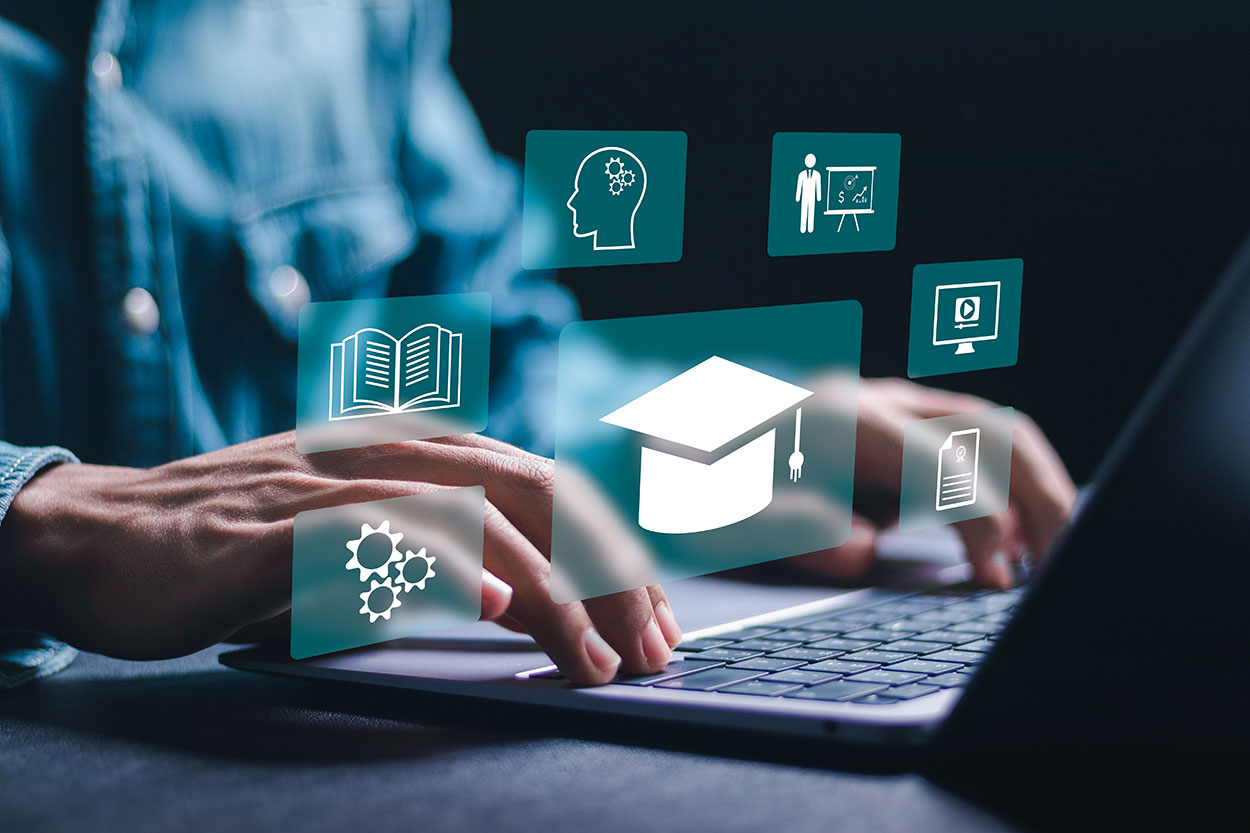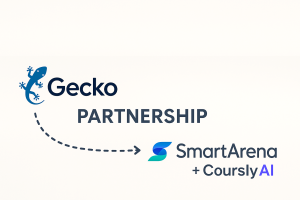Table of Contents
Key Highlights – LMS for Employee Onboarding
- Implementing an Onboarding LMS centralizes resources, automates processes, and ensures a consistent and efficient onboarding experience.
- Personalized learning paths, tailored to jobs and individual needs, improve engagement and retention of new employees.
- Automation of onboarding processes reduces the administrative burden on HR teams and simplifies training.
- Automatic porInteractive content, gamification, and mobile accessibility make learning more engaging and adaptable, increasing knowledge retention.
- Using an LMS for employee onboarding leads to faster onboarding completion, higher engagement, reduced administrative burden on the HR department, and improved employee retention rates.
The importance of effective employee induction
Employee onboarding is a critical process that sets the tone for a new employee's entire experience within an organization. A well-structured onboarding program ensures that employees quickly adapt to their role, understand the company culture, and become productive team members. Traditional onboarding methods can be time-consuming, inconsistent, and difficult to scale with business growth. Here's where you can Onboarding LMS completely transforms the process.
How an LMS is transforming the employee onboarding experience
LMS for employee onboarding It enables a centralized, scalable, and automated approach to training new employees. It allows companies to standardize learning materials, offer interactive content, track progress, and improve overall engagement. Let’s take a look at seven ways an LMS can improve the employee onboarding process.
1. Centralized access to introductory materials
Employee onboarding must be seamless and efficient, as new employees need to access all the necessary information in one place.
Enabling a unified platform for new hires
Onboarding LMS consolidates all onboarding resources in one place. New employees can access training materials, company policies, HR documents, and compliance modules at any time, eliminating the need for manual distribution of documentation.
Ensuring consistency in training content
Standardizing onboarding materials ensures that all new employees receive the same quality training. This reduces inconsistencies and helps new employees align with company goals and expectations from day one.
2. Personalized learning paths
A personalized approach to onboarding ensures that employees receive training tailored to their role and level of experience.
Tailoring induction programs to individual roles
Every employee has unique learning needs. LMS for employee onboarding It allows companies to create customized learning paths based on the job, ensuring that every new employee receives relevant training.
Increasing engagement with personalized content
Adaptive onboarding experiences keep employees engaged by providing specific content, customized quizzes, and adaptive learning modules that adapt to an individual's progress and performance.

3. Interactive and engaging content delivery
Interactive content keeps new employees motivated and improves knowledge retention.
Incorporating multimedia elements for better knowledge retention
Text-heavy content can be boring and ineffective. Onboarding LMS It supports videos, interactive modules, gamification, and simulations, which makes learning more engaging and improves knowledge retention.
Using quizzes and simulations to reinforce knowledge
Regular assessments and scenario-based simulations help new employees apply what they have learned in real-world situations. This hands-on approach increases understanding and ensures that employees are well-prepared for their roles.
4. Automated monitoring and reporting
Progress tracking helps HR teams assess the success of the implementation and resolve any issues in a timely manner.
Monitoring progress with real-time analytics
It enables HR teams and managers LMS for employee onboardingto monitor employee progress via a dashboard. Real-time insights allow them to identify knowledge gaps and provide additional support.
Timely identification and resolution of knowledge gaps
Onboarding LMS It allows you to generate reports on completion rates, assessment results, and engagement levels, helping HR teams improve their onboarding strategies.
5. Promoting social learning and collaboration
Encouraging social interactions strengthens a sense of belonging and accelerates learning.
Encouraging interactions between colleagues through forums and chats
New employees often feel isolated in the first few weeks. Onboarding LMS with built-in social features such as discussion forums, group chats, and mentoring, it encourages collaboration and engagement.
Creating a supportive community for new employees
Interactive features strengthen the sense of belonging by allowing new employees to connect with colleagues, ask questions, and exchange opinions, which improves employee retention rates and job satisfaction.

6. Mobile-friendly deployment solutions
Mobile friendly LMS for employee onboarding ensures accessibility and flexibility for new employees.
Providing access to learning materials anywhere, anytime
Mobile friendly Onboarding LMS It allows employees to complete training at their own pace – whether in the office, at home, or on the go.
Adapting to different learning styles
Employees learn in different ways, LMS for employee onboarding and enables different learning styles by incorporating text, audio, video, and interactive content that is accessible on any device.
7. Continuous feedback collection and improvements
Regular feedback helps organizations improve onboarding programs.
Collecting feedback from new employees to optimize induction programs
Onboarding LMS It allows HR teams to collect feedback through surveys and assessments. This data helps organizations continuously improve and adapt onboarding programs.
Adapting learning content based on employee feedback
Regular updates and improvements to learning modules ensure that the implementation remains relevant, effective, and aligned with company growth and industry changes.
Smart Arena's approach to onboarding employees with an LMS
Company XYZ was looking for a comprehensive solution to optimize the onboarding process, reduce administrative burden, and improve new employee engagement. After evaluating various options, they decided to LMS Smart Arenato effectively address these challenges.
Overview of Smart Arena LMS features
LMS for employee onboarding Smart Arena provided XYZ with a structured and efficient onboarding system. Key features included:
- Interactive learning modules – Engaging and flexible learning paths.
- Real-time analyses – HR teams were able to track progress and performance.
- Compliance tracking – Automated monitoring of mandatory training.
- Mobile accessibility – Employees could complete the deployment anywhere, anytime.
Case Study: How Company XYZ Transformed Employee Onboarding with Smart Arena LMS
Challenges before implementation
Before implementation Smart Arena LMS onboarding Company XYZ faced the following problems:
- Inconsistent training experiences between different departments.
- High administrative burden for HR teams.
- Delayed productivity new employees due to ineffective training.
- Low engagement and poor knowledge retention among employees.
Implemented solutions
Company XYZ took advantage of LMS for employee onboarding Smart Arenato overcome these challenges:
- Automated onboarding workflows – Digitization of training schedules and automatic progress tracking.
- Interactive learning paths – Tailored training according to the job.
- Gamification and quizzes – Increasing engagement with simulations and rewards.
- Monitoring progress – Real-time analytics enabled HR to identify gaps and optimize content.
Results achieved
Introduction Smart Arena LMS for employee onboarding has brought measurable improvements:
- Deployment completion time reduced by 45%, which accelerated the productivity of new employees.
- Employee engagement increased by 351%, which allowed for a better learning experience.
- HR administrative burden reduced by 50%, which freed up time for strategic initiatives.
- The mandatory training completion rate reached 100%, which ensured compliance with regulatory standards.
- Improved employee retention rates, as employees felt more supported and prepared for their tasks.
Successful integration of Smart Arena LMS for employee onboarding at XYZ demonstrates how effectively this platform can modernize and optimize the deployment process.

Manually creating reports can be time-consuming. Smart Arena automates LMS reporting by allowing scheduled reports to be sent directly to administrators and coaches.
- Weekly or monthly reports via email.
- Instant notifications of non-compliance or low engagement.
- Easy export options to share insights with teams.
Automation ensures that decision-makers always have access to the latest data without having to manually compile reports.
Summary of the benefits of using an LMS for employee onboarding
Onboarding LMS is a key tool for modern companies looking to improve the employee onboarding experience. It enables centralized access to materials, personalized learning, interactive content, automated monitoring, social collaboration, mobile accessibility, and continuous feedback.
Encouragement to leverage LMS technology for successful onboarding of new employees
Investment in LMS for employee onboarding It delivers a more efficient, engaging, and flexible onboarding process. Organizations that successfully implement an LMS reduce onboarding time, improve new employee retention, and increase overall productivity. Now is the time to digitally transform and optimize your onboarding strategy with an LMS.








